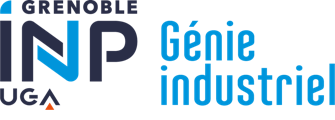Number of hours
- Lectures 19.5
- Projects -
- Tutorials 43.5
- Internship -
- Laboratory works 16.5
- Written tests 4.0
ECTS
ECTS 6.0
Goal(s)
- To understand the needs of numerical computing and its specificities; to know and understand the standard methods of numerical analysis (continuous optimization, differential equations, function estimation...)
- To know the basic concepts and tools of Probabilities; to be capable of using them to model stochastic problems.
• To understand the foundations of algorithmic and data structures; to know how to perform a top-down analysis of problems and design modular solutions based on the main concepts of object oriented programming; to be capable of implementing one's own programs using a programming language (Java).
Content(s)
Numerical analysis:
- error control;
- discretization, derivative evaluations, Euler method for differential equations;
- continuous optimization (properties, gradien and Newton method);
- continuous optimization with constraints (KKT conditions).
Probabilities:
- discrete and continuous random variables;
- independence, conditionnal probabilities;
- pseudo-random number generation;
- expected value and variance.
Computer science:
- algorithmic formalism and the main concepts of object oriented programming;
- top-down analysis of problems;
- definition of an algorithmic language (variables, control structures);
- data structures (tables, lists) and algorithmic techniques (recursion, divide and conquer)
- simple complexity analysis
- object oriented programming (objects, classes, attributes, encapsulation) and a programming language (JAVA).
Mathematics
CcM : continuous evaluation (maths)
CcI : continuous evaluation (computer science)
ExM : written exam (maths)
ExI : written exam (computer science)
Pro : project
S2 : exam session 2, maths and computer science
N1 = final result, session 1
N2 = final result, session 2
Chaque partie reçoit une note : N_M (note de Mathématiques, 40% de l'UE), N_I (note d'Informatique, 40% de l'UE) et N_P (note de Problèmes, 20% de l'UE).
Chacune de ses notes est formée à partir de trois types d'évaluations : un Contrôle Continu (CC ; exercices courts tout au long du semestre), un TP Noté (TP ; épreuve en ligne en temps limité), un examen (EX ; épreuve sur feuille en temps limité). Les CC comptent pour 20% pour les parties Maths et Informatique, 30% pour la partie Problèmes ; ils ne comptent que s'ils sont bénéfiques et dans la limite de 14. Les TP et EX comptent pour 40% pour les parties Maths et Informatique ; le TP compte pour 70% (pas d'EX) pour la partie Problèmes.
En résumé :
- Évaluations :
. Maths : CC_M, TP_M, EX_M
. Info : CC_I, TP_I, EX_I
. Problèmes: CC_P, TP_P - Calcul des notes N_M et N_I :
. CC : 20% ; ne compte que si bénéfique, limité à 14
. TP : 40%
. EX : 40%
=> N = MAX( MIN(CC;14)*0,2 + TP*0,4 + EX*0,4 ; (TP + EX)/2) - Calcul de la note N_P :
. CC : 30% ; ne compte que si bénéfique, limité à 14
. TP : 70%
=> N = MAX( MIN(CC;14)*0,3 + TP*0,7 ; TP)
Note UE: S1 = 0.4*N_M + 0.4*N_I + 0.2*N_P
Session 2: un seul examen avec Maths /et/ Info, validé si note >= 10 avec au moins 3 en Maths et 3 en Info.
The course exists in the following branches:
- Curriculum - Engineer student Bachelor - Semester 5
Course ID : 3GUC0205
Course language(s): 
You can find this course among all other courses.
- L'Optimisation, J.B. Hiriart-Urruty, PUF, 1996.
- Mathématiques numériques pour l'ingénieur, B. Radi, A El Hami. Ellipses, 2010.
- Analyse numérique matricielle appliquée à l'art de l'ingénieur, P. Lascaux, R. Théodor. Masson (2 tomes).
- Introduction to Probability Models, Sheldon M. Ross, Elsevier.
- Introduction au calcul des probabilités, Gérald Baillargeon, 1999.
- Probabilité, analyse de données et statistique, G. Saporta, 2006.
- Calcul des probabilités : cours et exercices corrigés", D. Foata, A. Fuchs.
- http://ljk.imag.fr/membres/Bernard.Ycart/smel/ (ce site propose un cours, des jeux de données, des articles de réflexion, et surtout beaucoup d'applications pour visualiser, tester et comprendre les différents concepts du cours)
- Introduction to algorithms Ed. McGraw Hill. Thomas H. CORMEN, Charles E. LEISERSON, Ronald L. RIVEST.
- Foundations of Computer Science. Ed. W. H. Freeman. Alfred V. Aho, Jeffrey D. Ullman.
- Initiation à l'informatique. Ed. Eyrolles. Henri-Pierre Charles
- Apprendre à programmer avec Python3, Gérard Swinnen, 2012
- The Python Standard Library, https://docs.python.org/3/library/index.html
French State controlled diploma conferring a Master's degree




